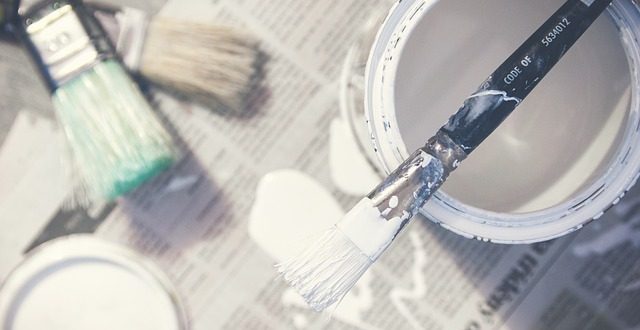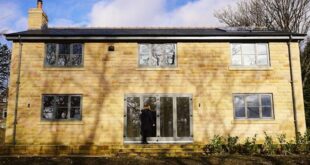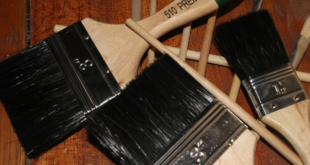To Move or Improve a tough decision to make, here are our thoughts on the pros and cons of both.
Moving home can be incredibly expensive. Let us look at selling a home worth £400,000 and buying another for £500,000. In addition to the £100,000 extra mortgage, you will be faced with combined estate agents, legal, moving and stamp duty fees of around £28,000. At around 1%, estate agents fees are bad enough (but at least they do something for it). Stamp duty, now at 3% or £15,000 for a £500,000 home is simply outrageous. It is not surprising that more of us are staying put, improving our homes instead of moving.
Move or Improve?
Taking the example above. You could spend up to around £128,000 on improvements, before you are worse off and with the added satisfaction that you get the full benefit, rather than the Chancellor and lawyers! You can achieve quite a lot for this figure, and not suffer as much disruption.
There is of course a big proviso, “Will it satisfy your needs?” This is more important than whether or not the improvements can be justified by the increase in value. If you intend to stay in the home long enough to take advantage of the work, this should be your overriding reason for justifying improving.
Improvements cannot achieve miracles, if you do not like the area, the schools or the size of the garden, then improving will not help. Some home layouts by their nature are difficult to extend successfully. If on the other hand, you like where you live and there is the space to extend, then consider improvement. Having work done can cost more than you think. As part of the decision making process, you should list the improvement work required and obtaining estimates for the work. There are also foreseen and unforeseen costs when moving. Make sure you consider these as part of your calculations. Finance can be another factor to consider, whereas a move will probably require a big leap in monthly outgoings, improvement work can be spread out over time.
Planning Improvements
Having decided to improve rather than improve, where do you start? Here are a few tips to consider:
- Building Work – If you are planning to extend, it is worth getting this out of the way first. It is messy and disruptive; there is also a risk that during construction of some collateral damage to decoration etc.
- Basic Infrastructure – It is important to get issues with roofing, plumbing, plastering and wiring sorted out first. These are messy tasks which can damage decoration.
- Essentials – It is hard to manage for long without a Kitchen or Bathroom. If this is unavoidable, you will need to plan alternatives. Possibilities are a temporary Kitchen set-up in a living room or garage, possibly a Portaloo or similar, you can even install a bath temporarily with imagination. For long projects, a used caravan is useful if you have space to locate one.
- Work backwards – Once the essential work is completed, it is wise to start on the rooms furthest away from your main access door. This avoids damage to decoration and floor coverings as the work proceeds. The last area to decorate should be the hall, stairs and landing.
- Outside – Finally sort out gardens and drives once the skips and rubble have gone for good!
What to improve
There is no hard and fast rule, only you can decide what needs updating and what needs changing to help your lifestyle. Although your enjoyment should be the prime objective, few of us can ignore the potential impact of the homes valuation. Estate agents will point out that there will be a ceiling price on any road. If your spend takes you beyond this, it is unlikely to be recovered if you decide to sell.
Here are the most popular home improvements:
- Kitchens – Top of the list for many, as the hub of the household the fashion today is for a large well-equipped living Kitchen. Unless you are fortunate, this is likely to require an extension or other alterations, such as the utilising the underused space of a dining room. Take some time with the designer to ensure it works as well as looking good. Storage and worktop space are key considerations. Enhance budget kitchen units by fitting not so budget granite or similar worktops.
- Bathrooms – Most of us now expect a luxury bathroom with a good shower essential. En suite bathrooms are highly desirable for the main bedroom. Although showers are now more popular than baths, it is unwise to remove all baths from a house.
- Conservatory – Provides extra space at lower cost than an extension. Usually they are a good investment. The cost of heating can limit Winter use. South facing locations can be too hot in Summer.
- Extensions – Well-designed extensions add space and value to home. Attention to detail with material and style are important. Stuck on boxes are not attractive and should you want to sell, may put off potential buyers.
- Loft Conversion – Usefulness and cost is dependent on the design and type of construction. It is likely to cost more than a similar sized extension but it delivers extra space without sacrificing any of your garden. It is well worth considering an extra bathroom with it.
- Windows – Replace rather than repair rotten windows if your budget allows. Modern aluminium and uPVC windows improve insulation and save on heating costs. Justifying the cost on fuel savings alone is unlikely, other benefits are reducing draughts, less decorating and appearance.
- Gardens – A place to sit out, relax and BBQ, somewhere for the children to play, or if you are a gardener, your hobby area. A garden usually has to fulfil several roles. A good designer will be able to make the best of even a small space. A neat well-designed garden will certainly increase a home’s attractiveness and value, more importantly though, it will be a nicer place to live!
- Drives – In most areas, somewhere to park off road is desirable or even essential. Drives by their nature cover large areas so dominate the view at the front of the house. Block paving is attractive, is hardwearing and not too expensive. Any paving requires good site preparation if it is to last.
- Decoration – Probably the cheapest home improvement, even more so if you do it yourself. Decorating probably has the best return on investment. Improve dark tired rooms by fresh paint.
- Furnishings – Floor coverings, Curtains and Furniture add colour, warmth and character to rooms. Look at magazines and visit shops for ideas. Transform old furniture and cupboards by painting using modern colours. Buy the best you can afford for you main rooms. As well as looking and feeling better, it will last longer.
 Homeowners Club If you are one of the 15 million homeowners in the UK, the free to join online Homeowners Club is for you.
Homeowners Club If you are one of the 15 million homeowners in the UK, the free to join online Homeowners Club is for you.








